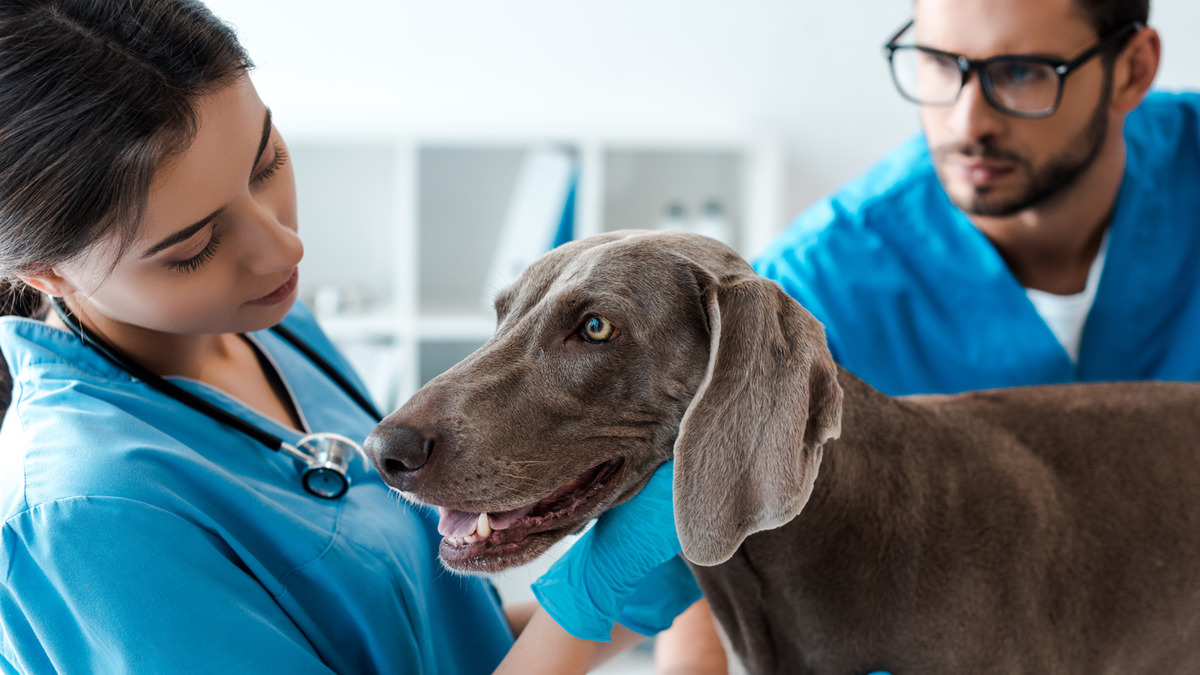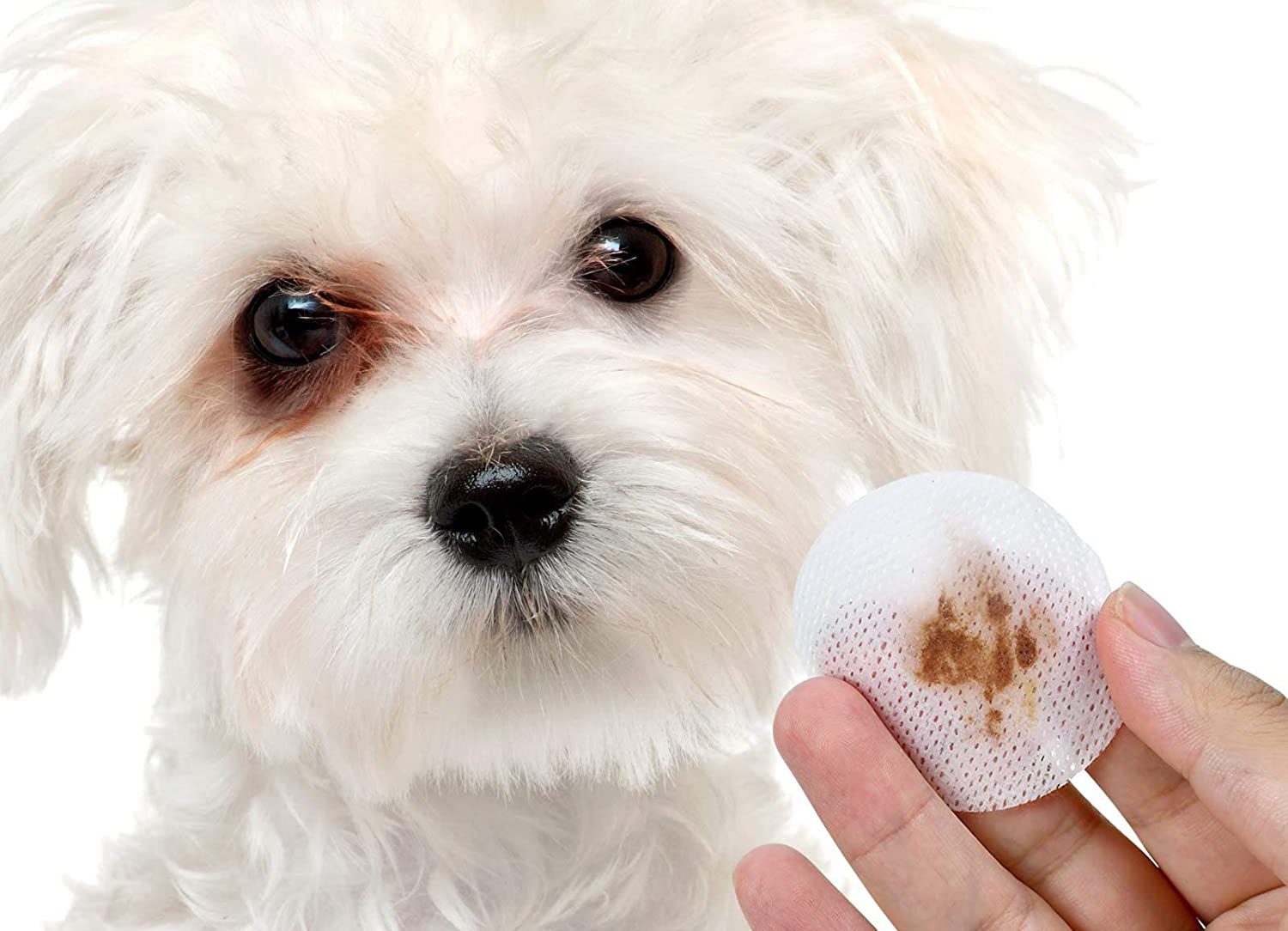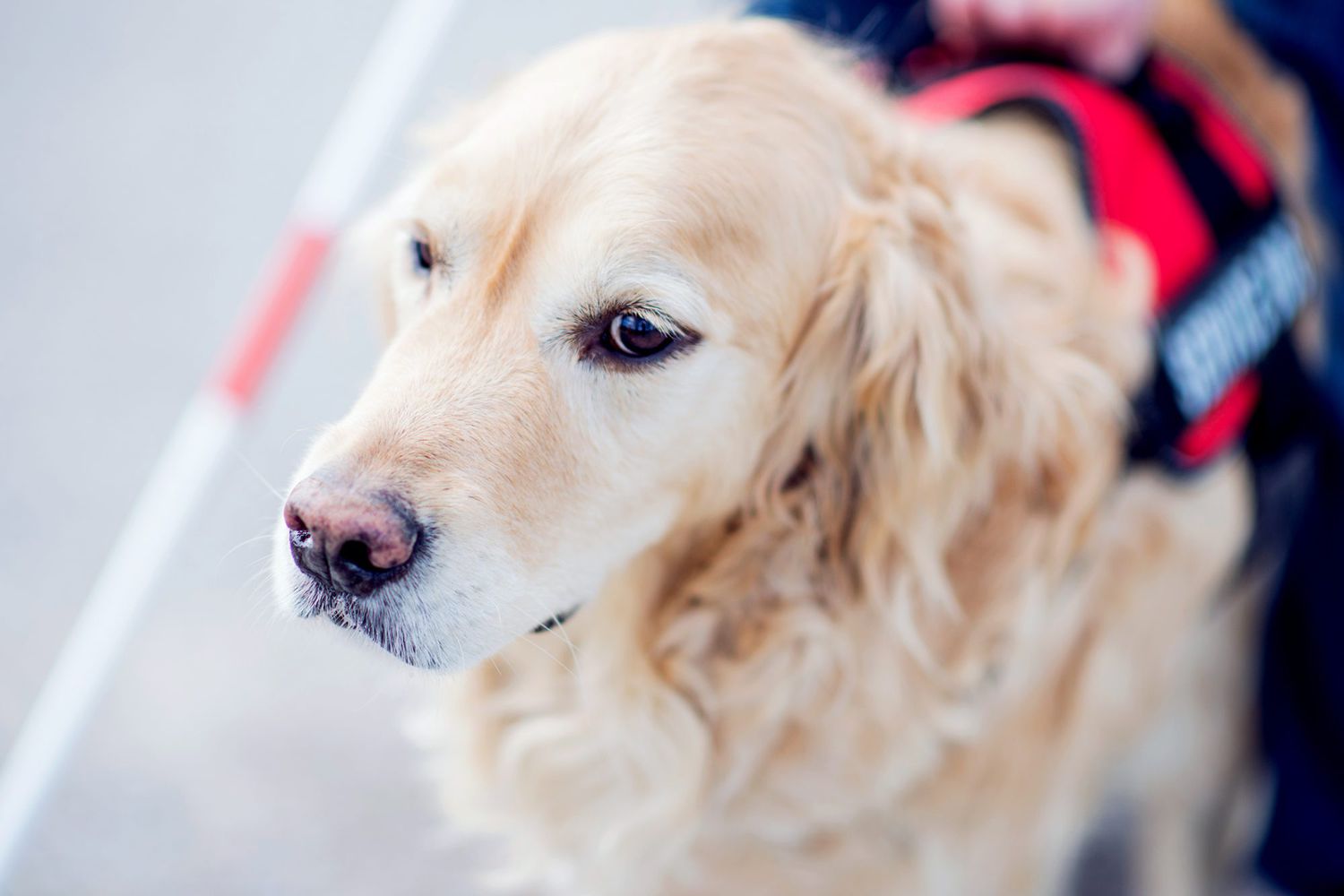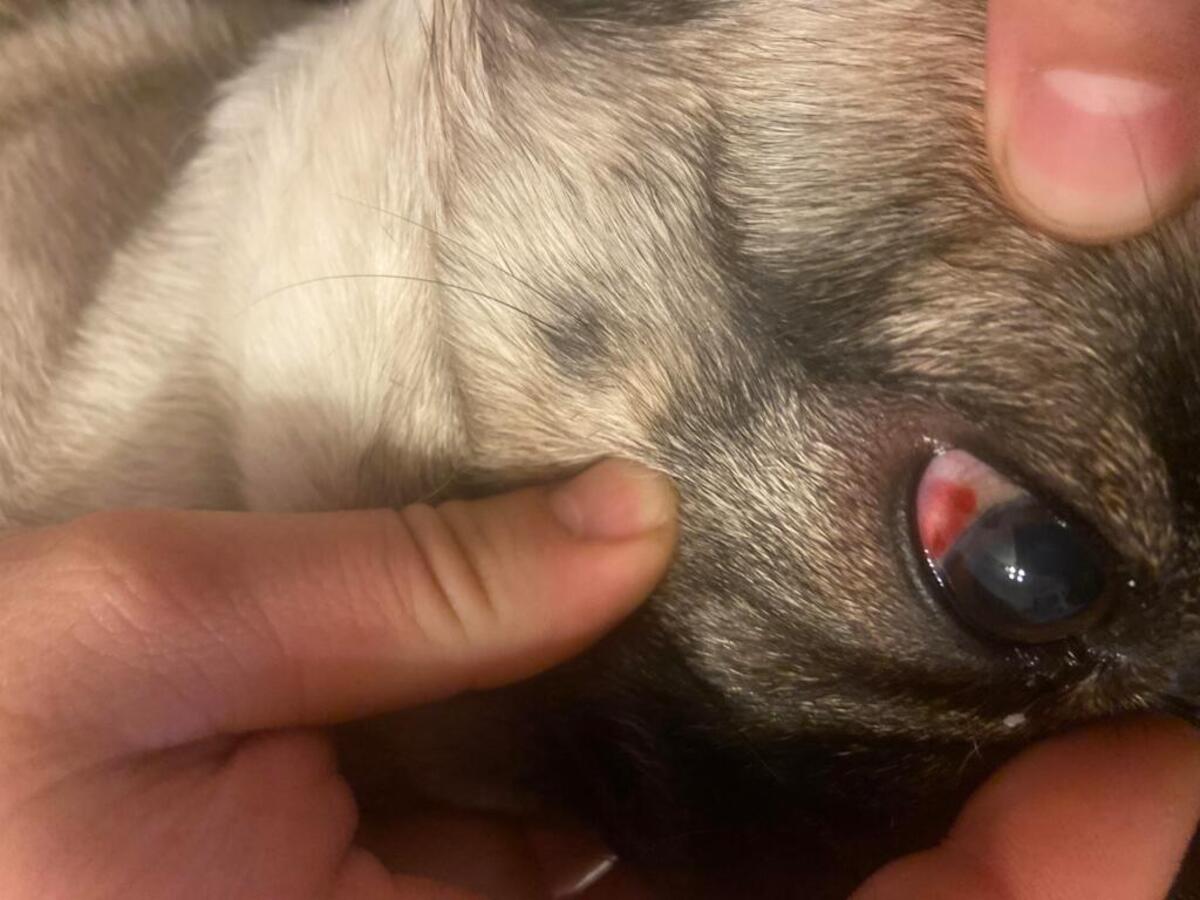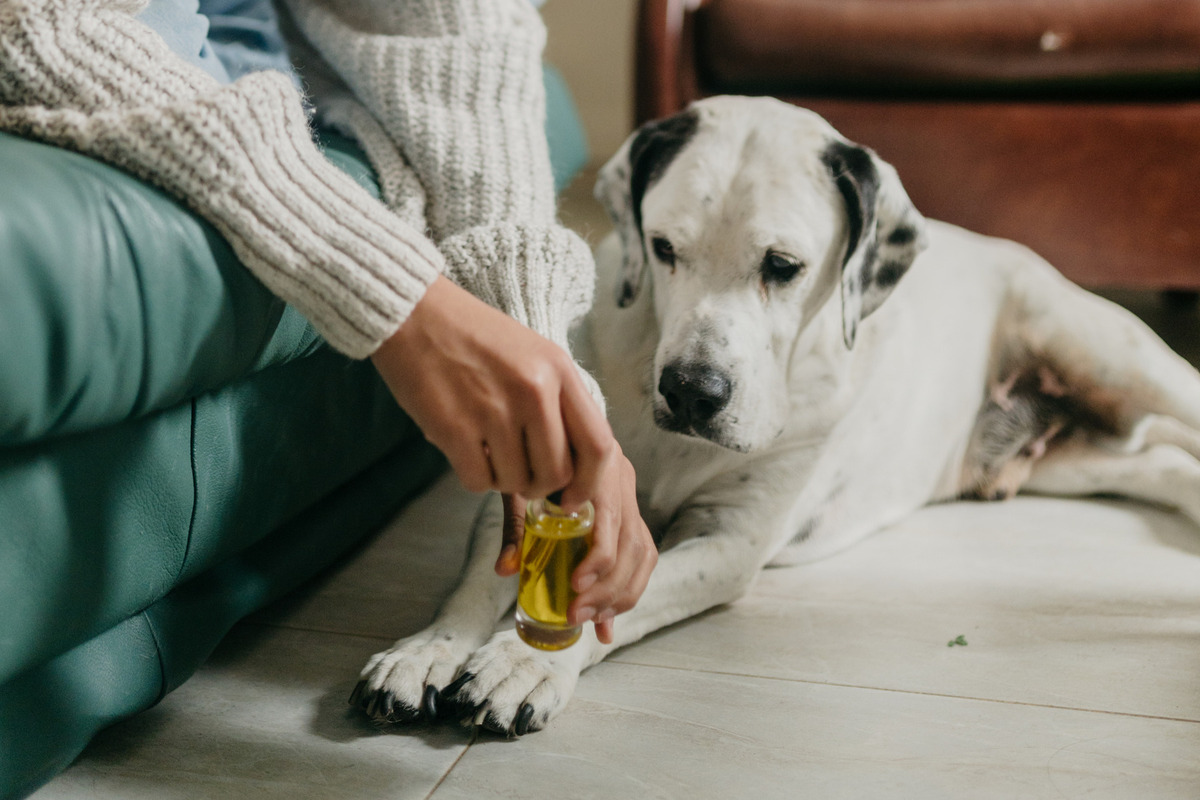Home>Health & Wellness>Common Health Issues>Eye and Ear Health>How Can You Treat Pink Eye On A Dog
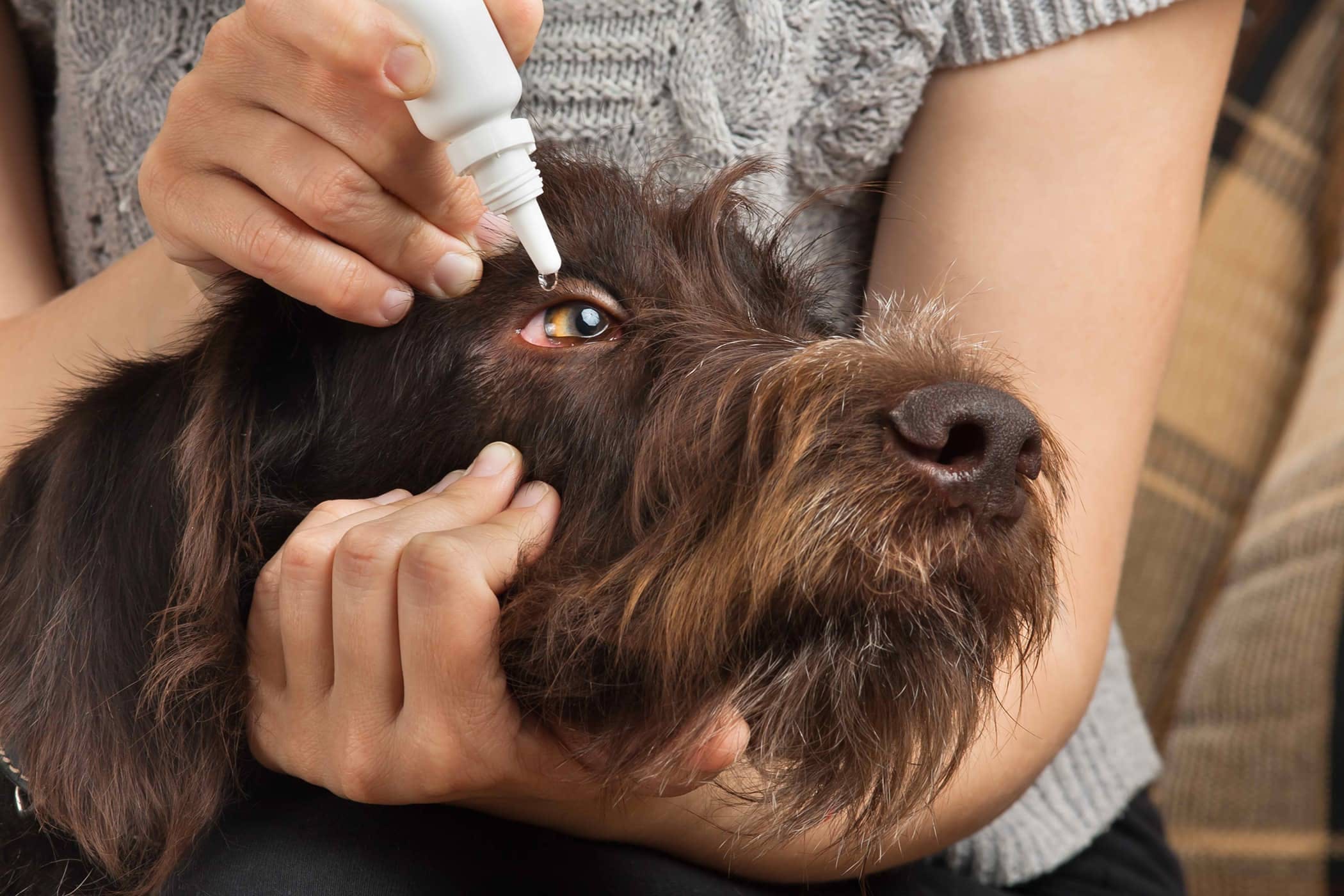

Eye and Ear Health
How Can You Treat Pink Eye On A Dog
Published: February 11, 2024
Learn effective ways to treat pink eye in dogs and maintain their eye and ear health. Discover expert tips and remedies for managing eye and ear conditions in your furry friend.
(Many of the links in this article redirect to a specific reviewed product. Your purchase of these products through affiliate links helps to generate commission for Pawsomeoldies.com, at no extra cost. Learn more)
Table of Contents
Introduction
Pink eye, also known as conjunctivitis, is a common eye condition that affects dogs, just as it does humans. It is characterized by inflammation of the conjunctiva, the thin, transparent membrane that covers the white part of the eye and lines the inner surface of the eyelids. This condition can cause discomfort and irritation for our furry friends, leading to excessive blinking, redness, and discharge from the eyes.
As a responsible pet owner, it's crucial to be aware of the signs and symptoms of pink eye in dogs, as well as the potential causes and treatment options available. By understanding this condition and its management, you can ensure the well-being and comfort of your canine companion.
In the following sections, we will delve into the intricacies of pink eye in dogs, exploring the symptoms, causes, treatment options, home remedies, and preventive measures. Whether you're a seasoned pet parent or a first-time dog owner, this comprehensive guide will equip you with the knowledge and insights needed to identify, manage, and prevent pink eye in your beloved furry friend.
Understanding Pink Eye in Dogs
Pink eye, or conjunctivitis, is a common ocular condition in dogs that can cause discomfort and irritation. The conjunctiva, a thin and transparent membrane covering the white part of the eye and lining the inner surface of the eyelids, becomes inflamed, leading to the characteristic redness and discharge associated with the condition.
The conjunctiva serves as a protective barrier for the eye, helping to keep it moist and free from foreign particles. When it becomes inflamed, the blood vessels within the conjunctiva dilate, resulting in the telltale pink or red appearance. This inflammation can be triggered by a variety of factors, including infections, allergies, irritants, and underlying health issues.
Understanding the symptoms and causes of pink eye in dogs is essential for prompt identification and management of the condition. By recognizing the signs of conjunctivitis and addressing its underlying causes, pet owners can ensure the well-being and comfort of their canine companions.
In the next sections, we will explore the specific symptoms and causes of pink eye in dogs, shedding light on the various factors that can contribute to this common ocular ailment.
Symptoms of Pink Eye in Dogs
-
Redness: One of the most noticeable symptoms of pink eye in dogs is redness in the affected eye or eyes. The conjunctiva becomes inflamed, causing the whites of the eyes to appear pink or red.
-
Eye Discharge: Dogs with pink eye often experience a discharge from the affected eye. This discharge can vary in consistency, ranging from watery to thick and pus-like. The presence of discharge may lead to crusting around the eye, especially after periods of rest.
-
Excessive Tearing: Pink eye can cause increased tear production in dogs, leading to excessive tearing or watery eyes. This can contribute to a constant dampness around the eye area.
-
Blinking and Squinting: Dogs with pink eye may exhibit increased blinking or squinting in an attempt to alleviate discomfort. The inflammation and irritation associated with conjunctivitis can prompt these behaviors as the dog tries to alleviate the discomfort.
-
Swelling: In some cases, pink eye can lead to swelling of the eyelids or the conjunctiva itself. This swelling may contribute to a puffy appearance around the affected eye.
-
Sensitivity to Light: Dogs with pink eye may display sensitivity to light, known as photophobia. They may avoid bright light or exhibit signs of discomfort when exposed to well-lit environments.
-
Rubbing or Pawing at the Eyes: Due to the discomfort caused by pink eye, affected dogs may engage in rubbing or pawing at the affected eye. This behavior is a natural response to the irritation and may exacerbate the condition.
-
Change in Eye Appearance: In severe cases of pink eye, the affected eye may undergo noticeable changes in appearance, such as cloudiness or a change in the color of the iris. These changes may indicate a more advanced or chronic form of conjunctivitis.
Recognizing these symptoms is crucial for early intervention and effective management of pink eye in dogs. By staying vigilant and seeking prompt veterinary care, pet owners can ensure the comfort and well-being of their furry companions.
Causes of Pink Eye in Dogs
Pink eye in dogs can be triggered by a variety of factors, each contributing to the inflammation and discomfort experienced by our furry companions. Understanding the potential causes of this ocular condition is essential for identifying the underlying triggers and implementing targeted management strategies.
-
Infections: Bacterial, viral, and fungal infections can instigate pink eye in dogs. Bacterial conjunctivitis, often characterized by purulent discharge and redness, can result from the proliferation of bacteria such as Staphylococcus or Streptococcus. Viral infections, including canine distemper virus, adenovirus, or herpesvirus, can also lead to conjunctivitis, accompanied by symptoms such as discharge and ocular discomfort. Additionally, fungal infections, though less common, can provoke inflammation of the conjunctiva, necessitating specialized treatment.
-
Allergies: Dogs, like humans, can experience allergic reactions that affect their eyes. Allergens such as pollen, dust mites, mold, or certain foods can trigger allergic conjunctivitis in dogs, leading to redness, itching, and discharge. Identifying and minimizing exposure to allergens can help manage allergic pink eye in affected pets.
-
Irritants: Exposure to irritants such as smoke, dust, or chemicals can provoke inflammation of the conjunctiva, resulting in pink eye. Environmental pollutants and household chemicals can irritate the sensitive ocular tissues, prompting symptoms such as redness, discharge, and discomfort.
-
Physical Trauma: Injuries to the eye or surrounding area can lead to pink eye in dogs. Foreign objects, scratches, or trauma from rough play can cause irritation and inflammation of the conjunctiva, necessitating prompt veterinary attention to prevent complications and alleviate discomfort.
-
Underlying Health Conditions: Certain systemic health issues, such as autoimmune diseases, dry eye (keratoconjunctivitis sicca), or anatomical abnormalities, can predispose dogs to developing pink eye. These underlying conditions can compromise the ocular immune response or disrupt the normal tear film, leading to conjunctival inflammation and associated symptoms.
-
Genetic Predisposition: Some dog breeds may exhibit a genetic predisposition to ocular conditions, including pink eye. Breeds with prominent or protruding eyes, such as Pugs or Bulldogs, may be more susceptible to developing conjunctivitis due to their anatomical features.
By recognizing the diverse causes of pink eye in dogs, pet owners can take proactive measures to minimize risk factors and address underlying triggers. Whether it involves implementing preventive strategies, seeking veterinary care for infections, or minimizing exposure to irritants and allergens, understanding the causes of pink eye empowers pet owners to safeguard the ocular health of their beloved canine companions.
Treatment Options for Pink Eye in Dogs
When it comes to treating pink eye in dogs, the approach may vary depending on the underlying cause and severity of the condition. Veterinary intervention is crucial for accurate diagnosis and tailored treatment plans to address the specific triggers of conjunctivitis. Here are the common treatment options for pink eye in dogs:
-
Topical Medications: Veterinarians often prescribe topical ophthalmic medications to address pink eye in dogs. These may include antibiotic ointments or eye drops to combat bacterial infections, antiviral medications for viral conjunctivitis, or antifungal preparations for fungal-related pink eye. These medications are applied directly to the affected eye, targeting the underlying cause of the inflammation.
-
Oral Medications: In cases where the pink eye is associated with systemic infections or underlying health issues, oral medications such as antibiotics, antivirals, or antifungals may be prescribed. These medications work to combat the root cause of the condition and may be accompanied by supportive therapies to alleviate discomfort and promote healing.
-
Anti-Inflammatory Agents: To reduce ocular inflammation and alleviate discomfort, veterinarians may recommend the use of anti-inflammatory medications. These can help manage the swelling, redness, and irritation associated with pink eye, contributing to improved comfort and faster recovery for affected dogs.
-
Warm Compresses: Applying warm compresses to the affected eye can help soothe the irritation and facilitate the removal of discharge or crusting. This simple yet effective home care measure can provide relief for dogs with pink eye, promoting ocular comfort and aiding in the resolution of symptoms.
-
Environmental Management: For cases of allergic conjunctivitis, identifying and minimizing exposure to allergens can play a pivotal role in managing pink eye in dogs. This may involve making adjustments to the dog's living environment, such as reducing exposure to pollen, dust, or other known allergens.
-
Supportive Care: In addition to targeted medications, providing supportive care is essential for the well-being of dogs with pink eye. This may include ensuring proper hydration, maintaining ocular hygiene, and preventing self-trauma by using Elizabethan collars or protective eyewear.
-
Follow-Up Examinations: Regular follow-up examinations with the veterinarian are crucial to monitor the progress of treatment and make any necessary adjustments. These appointments allow for ongoing assessment of the dog's ocular health and the effectiveness of the chosen treatment modalities.
By leveraging these treatment options, pet owners can work in tandem with veterinary professionals to address pink eye in dogs comprehensively. Tailored treatment plans, coupled with diligent home care and environmental management, can contribute to the resolution of pink eye and the restoration of ocular comfort for our beloved canine companions.
Home Remedies for Pink Eye in Dogs
In addition to veterinary care, certain home remedies can complement the treatment of pink eye in dogs, promoting ocular comfort and aiding in the resolution of symptoms. While these remedies are not substitutes for professional veterinary guidance, they can serve as supportive measures to alleviate discomfort and facilitate the healing process for our furry companions.
-
Saline Solution Rinse: A gentle saline solution can be used to rinse the affected eye, helping to remove discharge and soothe irritation. This can be prepared by dissolving a teaspoon of salt in a cup of warm water and using a clean, lint-free cloth or gauze to gently wipe the eye area.
-
Herbal Eyewash: Herbal infusions such as chamomile or calendula tea can be brewed and cooled before being used as an eyewash for dogs with pink eye. These natural remedies possess soothing properties and can aid in reducing inflammation and promoting ocular comfort.
-
Cold Compresses: In addition to warm compresses, cold compresses can be utilized to alleviate swelling and discomfort. A soft, cool compress can be applied to the affected eye for short intervals, providing relief for dogs experiencing pink eye symptoms.
-
Honey: Raw, organic honey, known for its antimicrobial and soothing properties, can be applied sparingly to the affected eye. A small amount can be gently dabbed around the eye area to harness the potential benefits of honey in promoting healing and reducing inflammation.
-
Environmental Modifications: Minimizing exposure to potential irritants and allergens in the dog's living environment can contribute to the management of pink eye. This may involve regular cleaning to reduce dust and allergens, as well as ensuring proper ventilation to maintain air quality.
-
Dietary Considerations: Providing a balanced and nutritious diet can support overall immune function and ocular health in dogs. Including foods rich in essential nutrients such as vitamin A, omega-3 fatty acids, and antioxidants can aid in maintaining ocular wellness.
-
Rest and Relaxation: Allowing affected dogs to rest and minimizing activities that may exacerbate ocular discomfort is essential for the healing process. Creating a calm and comfortable environment can promote relaxation and aid in the resolution of pink eye symptoms.
By incorporating these home remedies into the care routine for dogs with pink eye, pet owners can contribute to the well-being and comfort of their furry companions. It is important to consult with a veterinarian before implementing any home remedies and to seek professional guidance for the comprehensive management of pink eye in dogs.
Preventing Pink Eye in Dogs
Preventing pink eye in dogs involves proactive measures aimed at minimizing potential triggers and promoting overall ocular health. By implementing preventive strategies, pet owners can reduce the risk of their canine companions developing conjunctivitis and contribute to their long-term well-being.
Regular Ocular Hygiene
Maintaining regular ocular hygiene is essential for preventing pink eye in dogs. This includes gently wiping the area around the eyes with a clean, damp cloth to remove any accumulated debris or discharge. Additionally, keeping the fur around the eyes trimmed can help prevent irritation and reduce the likelihood of foreign particles coming into contact with the eyes.
Environmental Management
Creating a clean and safe living environment for dogs can significantly contribute to preventing pink eye. Regular cleaning of living spaces, including the removal of dust, allergens, and potential irritants, can minimize the risk of ocular inflammation. Providing adequate ventilation and ensuring proper air quality can also play a crucial role in safeguarding ocular health.
Read more: How To Treat A Dog With Eye Allergies
Allergen Control
Identifying and minimizing exposure to allergens can help prevent allergic conjunctivitis in dogs. This may involve using air purifiers to reduce airborne allergens, keeping indoor spaces free from mold and dust, and making informed choices regarding the dog's living environment. Additionally, consulting with a veterinarian to address potential allergens and sensitivities can aid in preventing allergic pink eye.
Regular Veterinary Check-ups
Scheduling routine veterinary examinations allows for the early detection of potential ocular issues and the implementation of preventive measures. Veterinarians can assess the dog's ocular health, provide guidance on preventive care, and address any underlying conditions that may predispose the dog to developing pink eye.
Proper Nutrition
Providing a balanced and nutritious diet is fundamental for supporting overall immune function and ocular health in dogs. Essential nutrients such as vitamin A, omega-3 fatty acids, and antioxidants play a vital role in maintaining ocular wellness. By ensuring that the dog's diet meets its nutritional needs, pet owners can contribute to the prevention of ocular ailments, including pink eye.
Avoiding Irritants
Minimizing exposure to potential irritants such as smoke, chemicals, and airborne pollutants is crucial for preventing pink eye. Creating a smoke-free environment, using pet-safe cleaning products, and being mindful of the dog's surroundings can help reduce the risk of ocular irritation and inflammation.
By incorporating these preventive measures into the care routine for dogs, pet owners can take proactive steps to minimize the risk of pink eye and promote the ocular health of their beloved companions. Through a combination of regular hygiene practices, environmental management, and attentive veterinary care, pet owners can create a supportive and preventive care framework to safeguard their dog's ocular well-being.
Read more: How Often Do You Treat Your Dog For Fleas?
When to See a Veterinarian
Prompt veterinary attention is essential when dealing with pink eye in dogs, as timely intervention can prevent potential complications and alleviate discomfort for our furry companions. Recognizing the signs that warrant a visit to the veterinarian is crucial for ensuring the optimal ocular health of dogs affected by conjunctivitis.
Persistent or Worsening Symptoms
If the symptoms of pink eye in a dog persist or worsen despite home care measures or initial treatment, it is imperative to seek veterinary evaluation. Persistent redness, discharge, swelling, or discomfort in the affected eye may indicate an underlying issue that requires professional assessment and targeted intervention.
Changes in Behavior
Any noticeable changes in the dog's behavior, such as increased sensitivity to light, excessive rubbing or pawing at the eyes, or signs of ocular discomfort, should prompt a visit to the veterinarian. Dogs may exhibit subtle cues indicating ocular discomfort, and addressing these changes promptly can prevent further discomfort and potential complications.
Presence of Additional Symptoms
If pink eye is accompanied by additional symptoms such as lethargy, loss of appetite, or changes in overall demeanor, it is essential to consult with a veterinarian. These accompanying signs may indicate systemic involvement or underlying health issues that require comprehensive evaluation and management.
History of Ocular Conditions
For dogs with a history of recurrent or chronic ocular conditions, including previous instances of pink eye, regular veterinary consultations are crucial. These visits allow for ongoing monitoring of ocular health and the implementation of preventive measures to minimize the recurrence of conjunctivitis.
Suspected Trauma or Foreign Body
In cases where the dog has experienced ocular trauma, such as scratches, foreign body entry, or blunt force injuries to the eye area, immediate veterinary attention is necessary. Traumatic incidents can lead to complications and require prompt assessment to prevent long-term damage to the eye.
Underlying Health Concerns
Dogs with underlying health conditions, such as autoimmune diseases, allergies, or anatomical abnormalities affecting the eyes, should receive regular veterinary care. Any signs of ocular inflammation or discomfort in these cases warrant professional evaluation to address the specific needs of the affected dog.
Preventive Guidance
Seeking veterinary guidance for preventive care and ocular wellness is essential for all dog owners. Regular check-ups allow veterinarians to provide tailored recommendations for maintaining ocular health, minimizing the risk of pink eye, and addressing any predisposing factors unique to the individual dog.
By recognizing the indications for seeking veterinary care, pet owners can prioritize the ocular well-being of their dogs and ensure that any instances of pink eye are promptly and comprehensively addressed by veterinary professionals. Early intervention and proactive management can contribute to the comfort, health, and happiness of our beloved canine companions.
